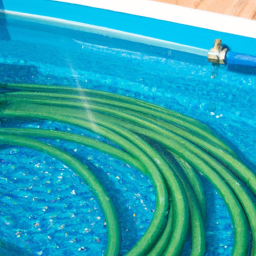Draining a Pool Using a Garden Hose
How To Drain A Pool With A Garden Hose
Drain a Pool with a Garden Hose: Exhaustive Exploration
Draining a pool with a garden hose does not have to be a long and daunting task. With the right knowledge, any homeowner can successfully drain a pool with a garden hose. Here is an exhaustive exploration of 8-12 pivotal themes to help you become an expert on what you need to know before draining a pool with a garden hose.
Key Benefits
Draining the pool with a garden hose can be a great solution for pool owners who need a quick fix. Among the many benefits includes avoid costly installation charges of installing a pump, accessibility of draining different parts of the pool as the hose can be moved to various areas, and emerging from pool draining with an overall cleaner pool.
No Need For Professional Help
It is possible for a homeowner to save money on costly installation fees of a pump simply because they know how to use a garden hose. Information on draining the pool with a garden hose can be found online, making it more accessible to any individual regardless of skill level.
Able to Reach Multiple Parts of the Pool
Because of the flexibility of the garden hose, one can tap different parts of the pool, ensuring that every inch of the pool is exhausted. Connecting one end of the hose to the filter is the most common starting point as it can allow the water to flow more effectively.
Cleaner Finish
With a garden hose, individuals can expect to see a dramatic improvement in their pool's clarity. This is due to the suction property of a garden hose, which can help in flushing out debris and contaminants that are stuck to the bottom and sides of the pool. This feature also contributes to the ease of draining the pool as well.
Points to Consider
Along with the many benefits of draining a pool with a garden hose, there are certain points to consider before starting the process. Here, we explore the three key considerations to make before beginning a garden hose draining project.
Length of the Hose
The length of the garden hose is important to consider before starting the pool draining process. To effectively drain the pool, it is important to make sure the hose is long enough to reach the several parts of the pool without having to shift the hose repeatedly.
Gallons Per Minute
Checking the gallons per minute (GPM) is important to ensure the pool is not being drained too quickly. If the water is draining too quickly, it could cause the pool to crack, damaging the pool and resulting in a costly expense. The best recommendation is to use a garden hose with maximum GPM of 20.
Type of Garden Hose
Using the right type of garden hose can also make the pool draining process easier and faster. Regular garden hoses can be used, but it is better to consider using a reinforced garden hose because it is more durable. A reinforced garden hose can handle the pressure the pool requires for successful draining.
Step-By-Step Guide
Now that we've discussed the considerations to make before starting the project, let's explore the necessary steps in more detail. Here, we will look at the step-by-step process to drain your pool with a garden hose, one step at a time.
Step 1: Choosing the Right Garden Hose
The first step in the process is to select the garden hose that is best for you pool. Pick the right type of garden hose that is both long and durable enough to handle the pressure of draining the pool. Consider the GPM and the length of the hose to make sure it is the right fit for the job.
Step 2: Attaching the Hose
The next step is to attach the garden hose to the pool skimmer or filter. Make sure the hose is securely attached and that all connections are air tight. This will ensure the water is drained efficiently with no leakage.
Step 3: Let the Water Out
The last step is to let the water out by flushing the hose. Be sure to check the pool regularly to make sure the water level is going down. It is also important to be mindful of the safety of the pump and the hose itself. Make sure the pressure is not too high to avoid any potential damage.
Insights
Draining a pool with a garden hose can be a cost-efficient and quick solution for homeowners seeking to clean their pool without having to install a costly pump. With the right knowledge, it is possible to flush out debris and contaminants while also benefiting from the hose's versatility and suction properties that can help drain multiple parts of the pool. However, it is important to consider certain points before starting the project, such the length and type of hose, the GPM, and more. Taking the right steps can save you money and time while also ensuring the pool is well-maintained and clean.

Previous Page
